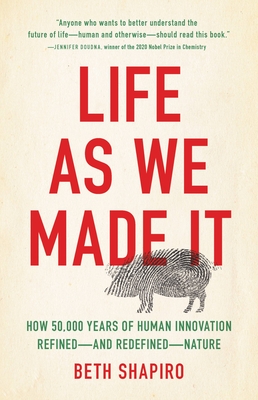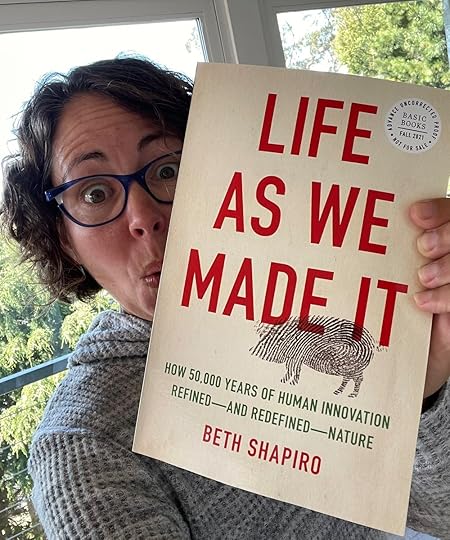What do you think?
Rate this book


352 pages, Hardcover
First published October 19, 2021


...it is clear that our actions not only alter the evolutionary trajectories of the species that go extinct (as an understatement), but also fundamentally change the evolutionary landscape in which other species, including our own, live. [loc. 1096]
This book -- subtitled 'How 50,000 Years of Human Innovation Refined — and Redefined — Nature' -- is very much a book of two halves: first, Shapiro (an evolutionary biologist specialising in ancient DNA) explores the ways in which human activity has affected ecosystems for millennia; then she describes recent advances in genetic engineering and editing, discusses the notion of de-extinction, and suggests ways in which biotechnology could revolutionise food production, benefit the environment and save endangered species.
I found the first half much more engaging than the second, though Shapiro is good at explaining scientific concepts and methods, and leavens her arguments with lots of fascinating factoids. (I did not know until reading Life as We Made It that a female elephant will regrow her hymen after giving birth. Ouch. And why?) There's a lot, too, about her early experiences in paleogenetics, and cheerful anecdotes about various embarrassing errors. Some of the most fascinating parts of the book were about ecosystems, their delicacy, and how easily humans or human-adjacent animals (rats, for example) can destroy a natural balance that's evolved over millions of years. I also learnt more about using genetics -- human and rat -- to trace prehistoric migration patterns, and about why passenger pigeons thrived in flocks of millions or even billions. And Shapiro stresses that prehistoric human-related extinctions were not deliberate (unlike some modern examples, where overhunting or overfishing has continued in spite of dwindling populations) and may have been exacerbated by other factors.
Shapiro is broadly in favour of genetic modification, and critical of those who hold 'unscientific' beliefs about it: she points out 'the hypocrisy of ignoring the thousands of uncharacterized and random genetic alterations that emerge through mutation breeding while excluding products from the market that contain few, specific, and deliberately induced mutations on the grounds that unintended consequences of these mutations might turn out to be dangerous.' But she does sound a note of caution, arguing that social and cultural changes are as vital as genetic editing if famine, climate change and environmental degradation are to be countered.
There were some issues that should have been caught by an editor, several involving incorrect units of measurement ('[Elephants] produce 100 kilometers (220 lb) of manure daily') or typos ('white-footed mouse populations in Aotearoa/New England'). For a book so favourably reviewed in the scientific as well as the popular press, this sort of error is embarrassing.
Fulfils the ‘extract’ rubric of the Annual Non-Fiction Reading Challenge -- extracting and combining genetic material...